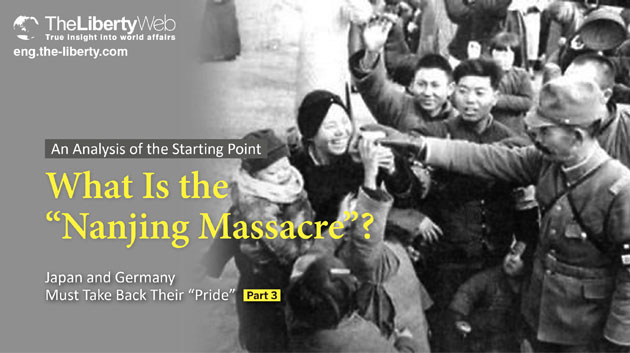An Analysis of the Starting Point
What Is the "Nanjing Massacre"?
December 13, 1937, the Japanese army captured the capital of the Kuomintang government, Nanjing. The international community did not make the Nanjing battle a problem at the time. However, after losing the war, at the Tokyo Trial, suddenly the “Nanjing Massacre” was introduced. It was said then that, “200 to 300 civilians and prisoners were killed,” and, “over 20,000 people were raped,” for which General Iwane Matsui was executed as a war criminal.
Lie: 200~300 civilians and prisoners were killed
Truth:Westerners inside the city did not witness
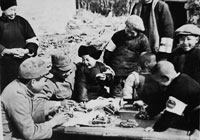
Children of Nanjing playing with toys with Japanese soldiers
The testimonies at the Tokyo Trial regarding the massacre were extremely inaccurate. The American Reverend Magee who was in Nanjing at the time, and reported many massacres, revealed that he only witnessed one killing first hand, and in that case the person had tried to escape and was shot.
The Nanjing safety zone established by the international committee to protect civilians stated that the Japanese army killed at most 49 people. However, such damage itself is suspect.
Many reports were made to the committee from the Chinese as victims of the Japanese army, and the committee accepted and recorded them all. A Japanese diplomat who became concerned went to the actual site with the committee members where the alleged abuse took place, and found that there were many reported cases where nothing had actually happened.
Professor Smith, an American committee member, has said, “the incidents recorded here have not been verified.”
Lie: Over 20,000 were raped
Truth:Only a few incidents of crimes by Japanese soldiers
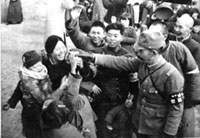
Nanjing women happily receiving milk from Japanese army
The source of the “20,000 raped” can be traced to the journal of John Rabe, a German committee member. Moreso, in the committee’s file, the number of rape cases reported was 361. Even more, only 7 of the cases reported were judged to be by the Japanese army, and that Japanese soldier(s) had been punished. Actually, as was the case with Reverend Magee who reported the massacre, Rabe too had never witnessed any crime scene himself.
Further, in the journal of McCallum, a doctor from Jinling University in Nanjing, who made a submission to the Tokyo Trial, stated, “I heard from Chinese refugees that the rapes, captures, arson were done not by Japanese soldiers, but by Chinese soldiers.” In many cases, crimes carried out by Chinese were attributed as crimes by the Japanese Army.
There are no records showing that there was an extreme increase in the abortion and birth rates of Chinese women in Nanjing at the corresponding time either.
Truth:Photos are mostly forgeries
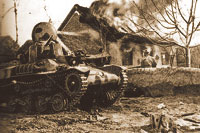 The photo on the left was used in “The Rape of Nanjing” (by Iris Chang), and says, “Japanese army is burning houses.” However, the tank is a “97 type light-armored vehicle” and it wasn’t produced until 1939. So, it had not existed in 1937 at the time of the fall of Nanjing. In this way, most of the photos used as evidence of the Nanjing massacre are either forgeries or irrelevant.
The photo on the left was used in “The Rape of Nanjing” (by Iris Chang), and says, “Japanese army is burning houses.” However, the tank is a “97 type light-armored vehicle” and it wasn’t produced until 1939. So, it had not existed in 1937 at the time of the fall of Nanjing. In this way, most of the photos used as evidence of the Nanjing massacre are either forgeries or irrelevant.
Truth:The deep ties between the Westerners who reported the “massacre” and the Chinese Kuomintang Party
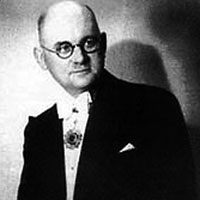
John Rabe
Chairman of the Nanjing International Committee. As President of the Chinese branch of the German company Siemens, allegations of selling massive amounts of weapons to the Kuomintang Party.
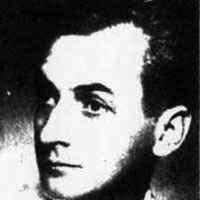
Harold Timperley
British paper, “Manchester Guardian” reporter from Australia. Doubled as advisor to the Kuomintang Party’s propaganda department.
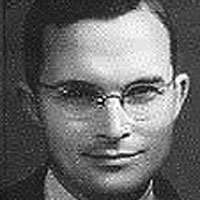
Lewis Smyth
Professor at Nanjing’s Jinling University. The “Smyth Investigation” is a book said to have been requested and funded by the Kuomintang International Propaganda.
There Was No “Massacre”
There is much other evidence that show that there was no “massacre”.
For instance, a month after the capture of Nanking by the Japanese army, the population of Nanking went from 200 – 250,000, an increase of 50,000 people. Three weeks later, electricity and water was reestablished as well. Also, at the Tokyo Trial, the Kuomintang Party tampered with the number of burials recorded and made it look like the Japanese army committed a massacre (Interview of Mr. Kenichi Ara), when in fact the Japanese army had not committed a “massacre” in Nanking.
On the next page, we will focus on “The Rape of Nanking” by Iris Chang that spread the lie of a “massacre” abroad.

